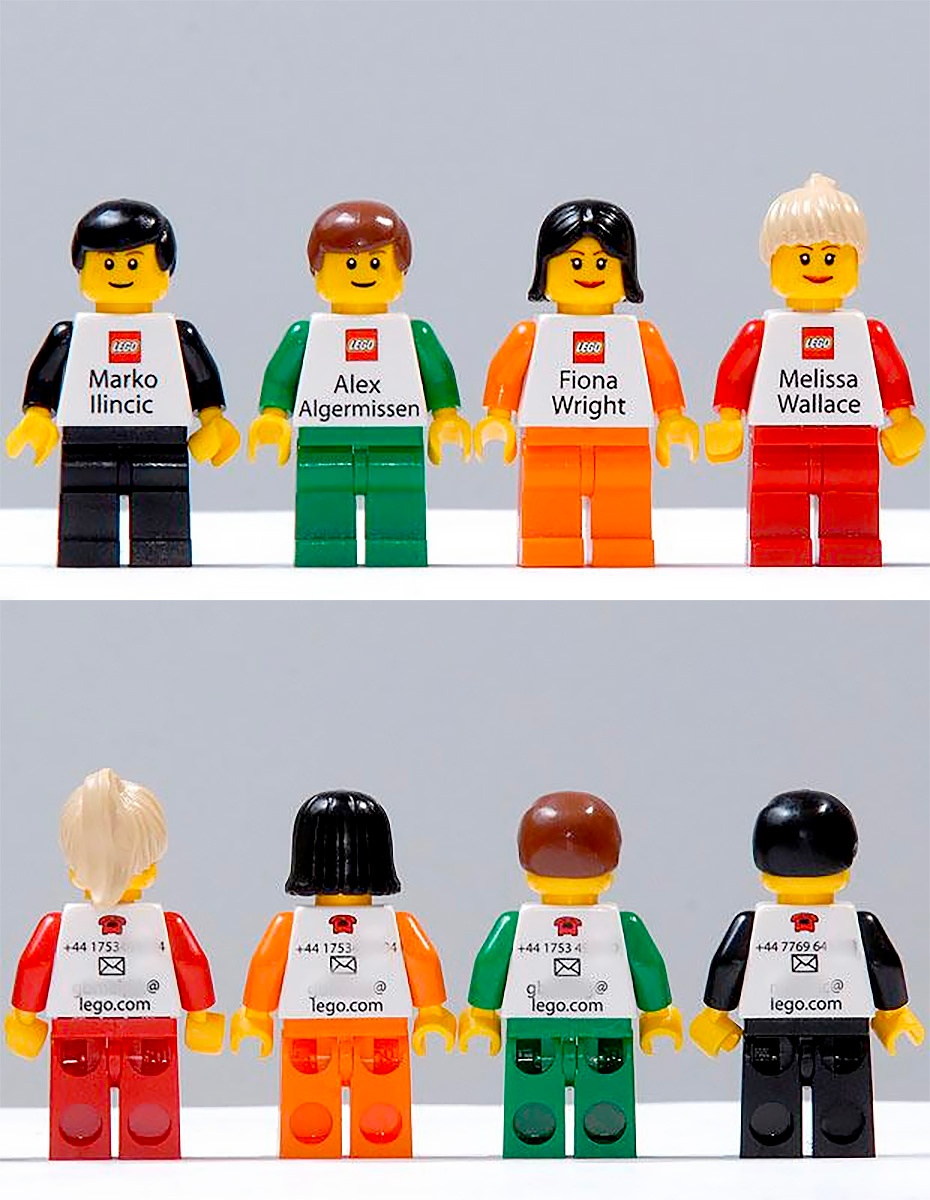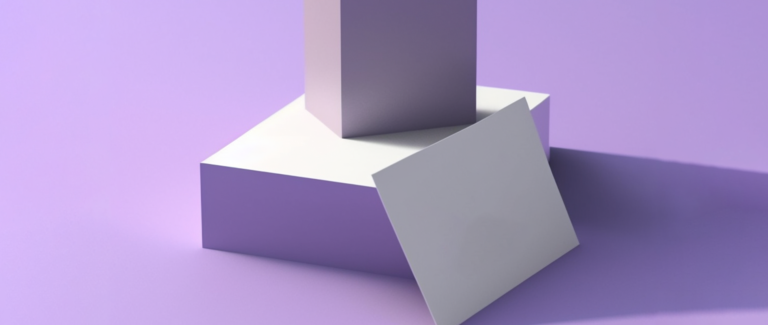As in-person events and networking make a comeback, it’s more important than ever to have a business card that conveys your brand and helps you stand out from the crowd. Your business cards are the key to converting sales—in fact, in-person events outperform digital events in close rate opportunities by more than 100%. Not only that, but they remain one of the only physical ways to share information about your company with potential customers.
Whether you’re just starting out or looking to refresh your current business card, here are some ideas to inspire you.
Elements of a successful business card
Business cards have one aim: to get you more business. While it is tempting to use a business card as an opportunity for creativity, you still need to ensure potential buyers can find you online or in person.
There are several key components of an eye-catching business card:
Your logo
Your brand logo helps communicate the brand personality or brand identity of your company, and potentially what service you provide. Having a high-quality logo design clearly visible on your business card can increase brand awareness and help people remember your company.
Name and contact information
The primary use of a business card is to provide someone with your contact details in a small package that acts as a physical reminder of yourself. Include your name and position at the company, phone numbers, business address, email, website address, and up-to-date social media account information.
Memorable design and style
Traditional business cards typically are black of blue and white with a minimalist aesthetic, while modern cards use a creative approach to grab someone’s attention. Consider including a scannable QR code that links to your website, using alternatives to cardstock like recycled materials, or trying a vertical orientation card design.
16 business card ideas
- Non-rectangular shapes
- Vertical design
- Different backing material
- Mimicry
- QR codes
- Graphics
- Unique lettering
- Bold colors
- Freebies
- Digital cards
- Photography
- Calligraphy
- Artwork and illustrations
- Usable cards
- Cut-out details
- Alternative objects
Your business card should stand out from the pack while still conveying essential information. Here are some business card design ideas to inspire your own.
1. Non-rectangular shapes
Business cards can come in different shapes and sizes that reflect different kinds of businesses. You can get circular, square, diamond, and even custom shapes, which you can use to reflect what your business does. For example, if you sell dog toys, you might get your business cards cut in the shape of a dog’s head or a bone.

2. Vertical design
Vertically oriented business cards can be a way to fit in images or graphics better suited for that shape, such as portraits if you’re a portrait artist or a graphic of a tall building if you’re an architect.

3. Different backing materials
Plastic, metal, wood, cork, recycled composite, or even fabric are all options for your business card backing material. Be aware though that alternative materials tend to cost more to produce in bulk than regular cardstock does.

4. Mimicry
Using a design that reflects the essence of your business can be a great way to make a card memorable without someone even having to read the text. Imagine the business card of a florist that folds down the edges of a rectangular card to reflect a bouquet, or a cleaver-shaped card for a butcher.

5. QR codes
QR codes easily direct people to your business website or social media account, and are increasingly appearing on business cards.

6. Graphics
A card for a wine distributor might contain a graphic that looks like a wine glass stain, or a card for a framer can have a graphic of a picture frame on it. Think about graphics that reflect your business and what you sell—this will make your cards memorable and ensure they stand out.

7. Unique lettering
Embossed, raised, or otherwise unique lettering is another good way for the text on your card to pop out—literally. An acupuncturist’s business card, for example, can use perforated lettering that brings to mind the work of acupuncture needles.

8. Bold colors
Using a bold color palette on your card will also increase the chance people hang onto it, as research shows individuals keep a colored card 10 times longer than they do a plain white card.

9. Freebies
Attaching promotional codes or tiny samples can be a great way to get people invested in your operation. For example, a small packet with seeds inside and business information printed on the outside might be perfect for a landscaping or plant-related business.

10. Digital cards
Digital business cards kept on your phone can be sent via text or email. Besides limiting potential waste, digital business cards can also communicate your tech savviness. You can add whatever information you like to a digital business card, including links to your website, discount codes, and contact details.

11. Photography
High-quality photographs can add a touch of luxury to minimalist business cards—just make sure the images you use are relevant to your brand. For example, a florist might have a full-bleed image of a bouquet stretched across one side of their business card design, or an organic juice brand might include a photo of a rainforest or natural scenery.

12. Calligraphy
You don’t always need to include an image or graphic. Instead, use characterful calligraphy to spell out your or your business’s name and other information—just make sure it’s legible.

13. Artwork and illustrations
Use your business cards as a mini canvas to share relevant artwork or fun illustrations. Create unique pieces that customers can collect or add drawings that align with your brand. For example, include an illustration of your brand mascot, if you have one.

Alternatively, use pattern design or print to give your business card design a bold look.

14. Usable cards
Multi-purpose business cards are bound to be remembered. Think about how you can turn your cards into something people can use, like a mini cheese grater if you’re a cheesemonger, or a ruler if you sell DIY materials.

15. Cut-out details
Give your minimalist business cards added interest by laser cutting relevant shapes and designs into them. This works well for companies that work with wood or sell construction materials.

16. Alternative objects
Modern business cards don’t have to conform to traditional standards. They don’t even have to be cards. Think outside the box and use alternative objects to transfer business information to customers. For example, you might print your details onto Lego figures, erasers, or other stationery items.

How to design a business card
- Decide on font and color
- Decide on font and color
- Choose creative design elements
- Use tools to print your card
It might be tempting to slap your name, telephone number, and email address onto a card and call it a day. But taking the time to design an attractive business card can help market your small business and may increase sales. Here are a few steps you can take when designing your card:
1. Pick your layout
Vertical business cards, cards of different physical shapes and sizes, and cards with graphics or logos can draw the eye and increase the chance that a potential customer remembers you.
2. Decide on font and color
The font and color combinations on your business card should match those on your other marketing materials, packaging, or website. Consider using bolder colors in your brand’s color palette to grab attention.
3. Choose creative design elements
Embossed or raised lettering, photos, graphics, unique patterns, and even different backing materials like wood or recycled fabric can help create a lasting impression on a potential customer or business partner. Without overloading your card with information (remember the power of basic design principles like negative space), consider creative ways to tie back to your core business.
4. Use tools to print your card
Ecommerce businesses like Shopify offer their own free custom business card makers, as well as apps that offer business card templates specific to a wide variety of industries. If you’re looking for a trained graphic designer, Shopify also has a list of the best paid and free business card makers on the market.
Make your business cards work harder for you
Despite advanced technology, modern business cards are still an integral part of business. They provide a physical way for you to share information with potential customers and stay front of mind.
The key is to ensure your business cards stand out and reflect your brand in the right way. Use the business card ideas we’ve covered here to inspire your next design and make your business cards work harder for you at your next in-person event.
Business card ideas FAQ
How much do business cards cost?
A custom-designed, standard-size (2 inches by 3.5 inches) business card typically costs between 6¢ and 24¢ per card to make. Prices will be higher for larger sizes or special designs, such as embossed logos or unique shapes, and most printing companies will give you deals on bulk orders.
How many business cards should I order?
The answer to that depends on your industry and how often you are meeting potential customers or clients in person. Typical business card orders range in the hundreds but keep in mind that your sales can increase by 2.5% for every 2,000 cards you pass out.
How can I make my business card stand out from the competition?
Using creative business card design elements such as unique graphics, fonts, and eye-catching bold colors will help you stand out from the dozens of white business cards out there. It can also build positive associations with your business and increase the likelihood of gaining business.
Can I include my social media handles on my business card?
Yes. You can either include the handles in written form or use a scannable QR code to link people directly to your accounts online.
What should not be on a business card?
Unnecessary personal information such as your home address or any outdated information like defunct website URLs or non-working email addresses should not be included on a business card. You also want to make sure you don’t have spelling errors or low-quality photos, both of which could leave a bad impression.

